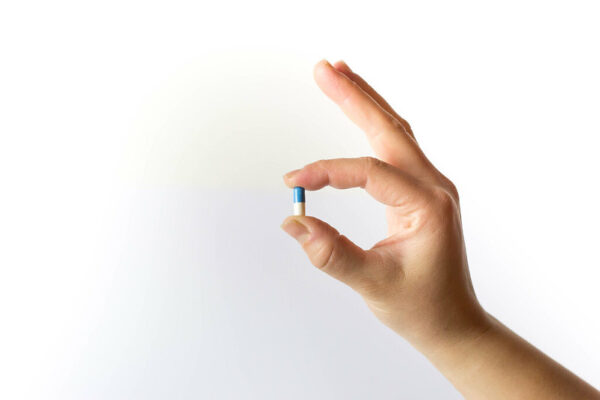
The story of orphan drug development is a story of a small market with big opportunities for pharmaceutical companies and the patients they serve. In fact, about a half-dozen of the world’s top-selling orphan drugs are among the world’s best-selling pharmaceuticals – demonstrating that these seemingly niche treatments are fulfilling a significant need.
While just a small percentage of people live with a rare disease – in the US, a rare disease is defined as a condition impacting less than 200,000 people – thousands of such conditions need effective therapies. However, the road to developing an orphan drug is fraught with challenges, and pharma companies looking for opportunities in a market expected to reach $340 billion by 2027 must equip themselves with the right tools and strategies to take advantage.

With the Rise of AI, What IP Disputes in Healthcare Are Likely to Emerge?
Munck Wilson Mandala Partner Greg Howison shared his perspective on some of the legal ramifications around AI, IP, connected devices and the data they generate, in response to emailed questions.
Key considerations for orphan drug trials
Clinical trials for orphan drugs include an additional layer of complexity across a few key areas, including trial design, patient recruitment, and lack of data. The nature of rare diseases means there is a limited patient pool available for study, and designing a scientifically sound protocol can be challenging. Rare conditions may also lack consensus around diagnosis, complicating recruitment. Trial sponsors may need help to determine appropriate endpoints for rare disease trials due to a dearth of clinical data about the natural progression of a rare condition.
Pharma companies can make up important ground here by identifying and engaging the right people, from researchers and physicians to patients and advocates. This capability requires going way beyond who’s publishing or speaking at conferences, and technology must play a role.
Network analytics – using technology and data to reveal the connections between people – can determine the true trust brokers within a disease community. In the rare disease space, these physicians, patient advocacy groups, and researchers are often revealed through social media platforms or information like claims and treatment data where available. Trial sponsors can leverage this information to get a complete picture of patient populations with the shared experience of a rare disease, potentially providing a larger data set or patient pool to build their trial.
The role of medical affairs in orphan drug development
Medical education is particularly important in orphan drug development because, as implied by the definition of rare disease, most pharma companies will not have history or experience to draw upon in the therapeutic area related to the rare condition they’re targeting. There won’t be the ability to build on a catalog of knowledge and experience as with other, more common therapeutic areas. Here, medical affairs can be crucial in bringing organizations up to speed.
Why? Medical affairs teams are uniquely positioned to act as a key strategic pillar within the broader organization, leading to a more modern and tech-enabled approach to insight-gathering. Medical Affairs professionals are among the first in their companies to experience the impact of proliferating data sources and, therefore, deeply understand the need to focus on true insight, rather than just accumulating data and observations.
Forced to navigate an influx of information from medical congresses, field observations, publication development, and social media platforms, medical affairs leaders increasingly can work with their cross-functional peers and create resources to increase the organization’s knowledge of unmet needs surrounding a rare condition. Often, medical affairs will be the innovators in understanding how to separate the signals from noise.
Technology and patient insights
Patients are no longer content to be passive consumers – they’re more involved in drug development than ever. Some of this is a natural extension of innovations like wearable monitors, health management apps, and telehealth, but some of it is by design: the FDA has issued guidance around patient-focused drug development, including collecting comprehensive and representative input from patients at all stages of the product commercialization lifecycle.
Most pharma companies espouse patient-centricity, but these well-meaning corporate philosophies can fall short. In orphan drug development, in particular, patients may develop a distrust of a medical infrastructure that has failed to diagnose them or struggles to meet their needs – patients consult more than seven doctors over the span of seven years in search of effective treatment – or they may simply be unable to access medical care due to distance, cost, or work and family commitments.
Drug developers need policies and technological infrastructure to execute on their goal of being patient-focused. At a minimum, this means a compliant way to engage patients and truly hear their voices; at its most effective, patient engagement also meets patients where they are – whenever and wherever that may be. Applied properly, virtual technology is a more accessible, more secure way of offering this benefit. While patients may be reluctant to disclose sensitive medical information in 1:1 or live group settings, anonymous discussions can offer the privacy they need to share pertinent facts and experiences with investigators, researchers, and physicians.
The orphan drug market presents a remarkable opportunity: a healthy and growing market for trial sponsors and the promise of answers and improved quality of life for patients with rare conditions. With the advocacy of medical affairs, patients are ready to do their part by sharing their lived experiences. Now, it is up to pharma to provide a safe environment, create policies and operationalize procedures that will support them as they do.
Photo by Flickr user Jernej Furman
Natalie DiMambro is Vice President of Product Commercialization and Training at Within3. Natalie’s career in the pharmaceutical and life sciences industry has included various roles since 2002, beginning with live production and events and landing happily in virtual engagement and software solutions. She is passionate about building deeper relationships in the virtual world and empowering individuals with the technical toolkit and communication skills needed to thrive in the ever-changing life science landscape.















